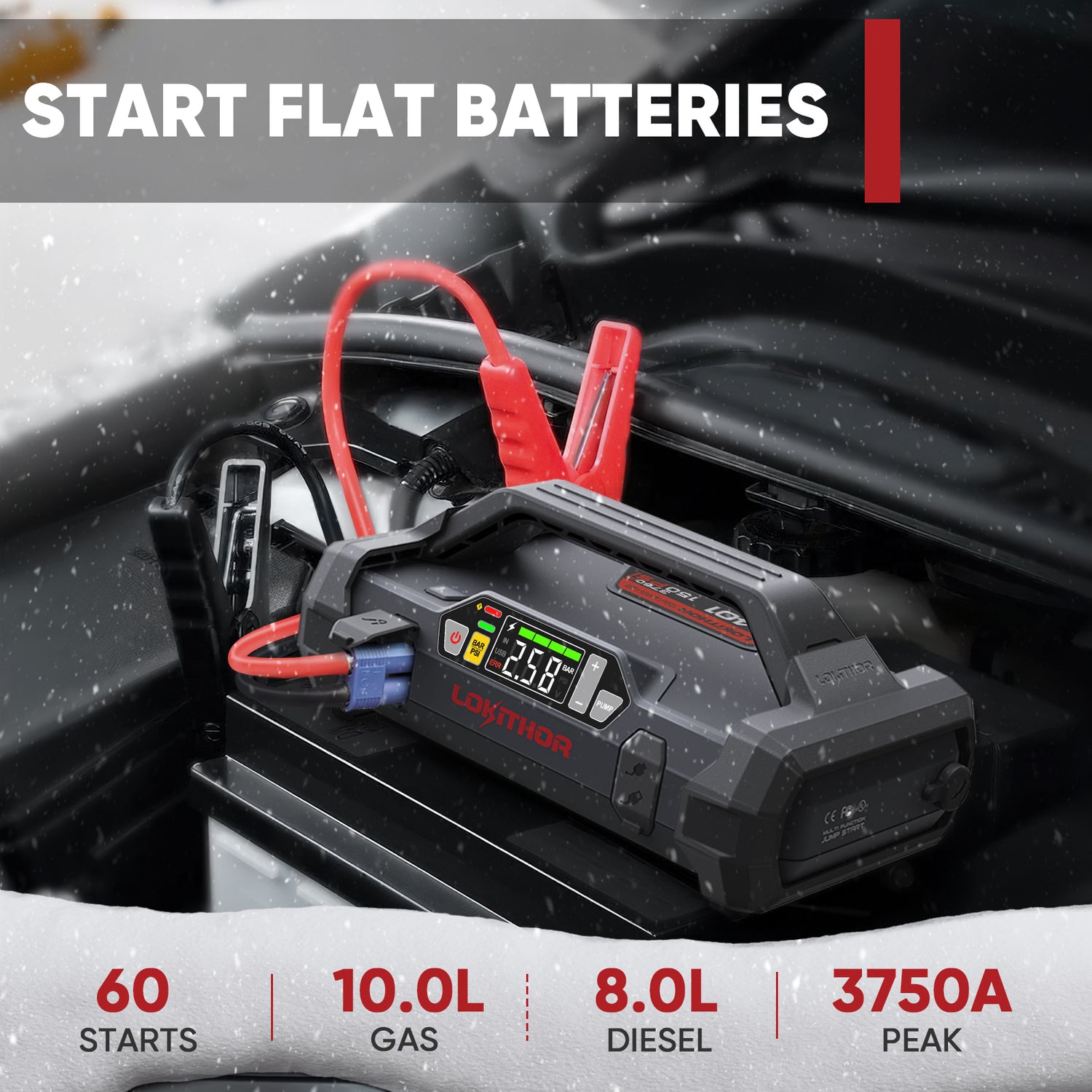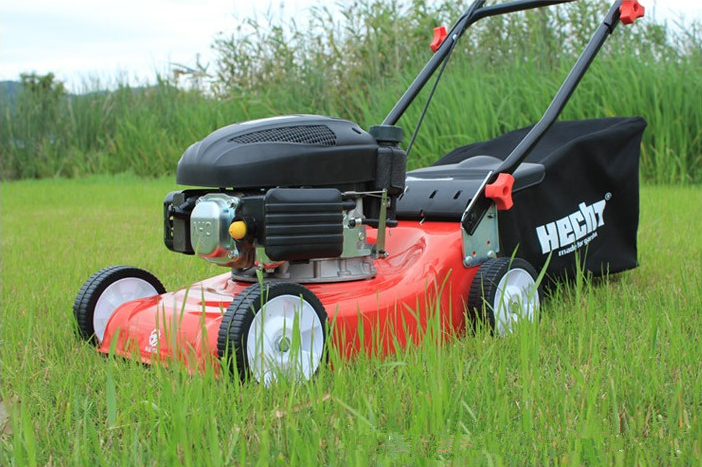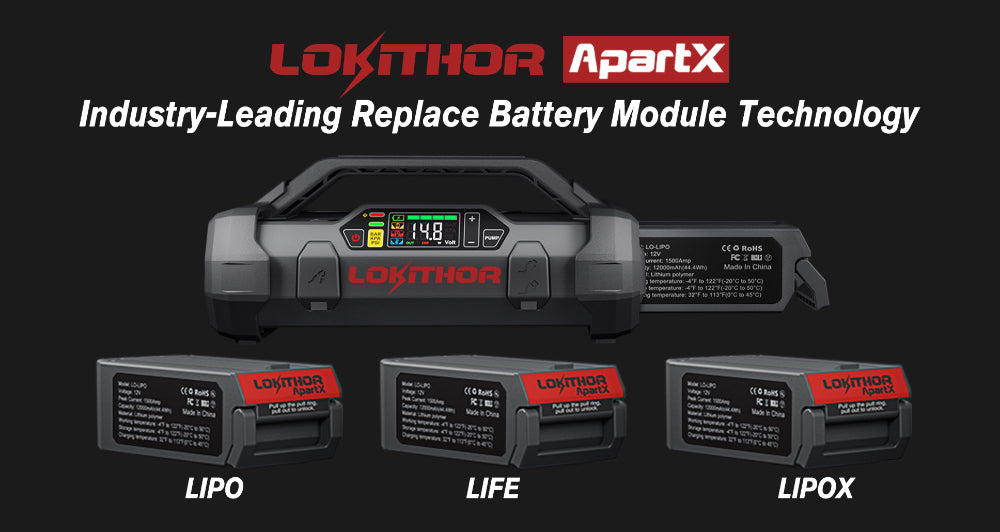With the increasing popularity of automobiles, having a portable car jumper starter is essential for every car owner. However, selecting a small car battery jump starter can be a daunting task, considering the variety of options available in the market. To help you make an informed decision, here are a few crucial factors to consider when choosing a jump starter that suits your needs.
1. Starting Current
The starting current refers to the amount of power the all in one car jump starter can deliver to the dead battery to initiate the starting process. It is crucial to select a jump starter with a starting current that matches or exceeds the requirements of your vehicle's battery. The starting current is typically measured in amps (A), and the higher the starting current, the more capable the jump starter will be in starting a vehicle with a dead battery. However, it is important to note that different vehicles may have different starting current requirements, so it's essential to check your vehicle's specifications or consult the jump starter manufacturer's recommendations to ensure compatibility.
2. Peak Current
Peak current refers to the maximum amount of current that the heavy duty car jump starter can deliver for a short duration of time. This surge of power is crucial for overcoming the initial resistance of a completely dead battery and starting the vehicle. The peak current is typically higher than the continuous starting current and is measured in amps (A). It is important to choose a portable power station jump starter with a peak current rating that is sufficient to handle the demands of your vehicle's battery. A higher peak current rating provides more power reserves and increases the chances of successfully starting your vehicle in challenging situations.
3. Cycle Life
Cycle life refers to the number of charge-discharge cycles a dead battery car starter can endure before its performance and capacity begin to degrade significantly. A higher cycle life indicates a more durable and long-lasting jump starter. The cycle life of a jump starter is influenced by various factors, including the quality of the battery cells used, the charging and discharging algorithms, and the overall design and construction of the device. It is advisable to choose a jump starter with a high cycle life, especially if you anticipate frequent use or if you want a reliable backup power source for an extended period.

4. Operating Temperature
Operating temperature is the range of temperatures within which the jump starter can function optimally. Different jump starters have different temperature limits, and it's essential to choose one that suits the environmental conditions you expect to encounter.
Extreme temperatures, whether hot or cold, can affect the performance and reliability of a jump starter. High temperatures can lead to overheating and potential damage to the internal components, while extremely cold temperatures can reduce the overall battery capacity and make it less effective in providing the necessary power to start a vehicle.
Before purchasing a jump starter, check the manufacturer's specifications for the recommended operating temperature range. Ensure that the jump starter can withstand the temperature extremes you may encounter in your region or during your travels. This will help ensure that the jump starter performs reliably when you need it the most, regardless of the weather conditions.
5. Operation Hours
Operation hours refer to the duration for which the jump starter can provide continuous power before it needs to be recharged. This factor is particularly relevant if you anticipate using the jump starter for extended periods or if you frequently encounter situations where a quick jump start may not be possible.
The operation hours of a jump starter can vary depending on its battery capacity and the power requirements of the devices you intend to operate. It is recommended to choose a jump starter with a longer operation hour rating to ensure it can meet your power needs throughout the desired duration.

6. Output Power
Output power is the amount of power the jump starter can deliver to start a vehicle or power other devices. The output power of a jump starter is typically measured in watts (W) or volts (V) and amps (A).
For starting a vehicle, the jump starter should provide sufficient power to overcome the initial resistance of the dead battery and crank the engine. It is recommended to choose a jump starter with a higher output power rating to ensure compatibility with a wide range of vehicle types and engine sizes. A higher output power allows for faster and more effective starting.
In addition to vehicle starting, some jump starters also offer additional power outlets or USB ports to charge electronic devices such as smartphones, tablets, or laptops. In such cases, the output power should be suitable for the specific devices you intend to power or charge. Make sure the jump starter provides the necessary voltage and current ratings to safely and efficiently power your devices.

7. Output Voltage and Interface
The output voltage refers to the electrical voltage that the jump starter provides to power or start devices. The most common output voltage for jump starters is 12 volts (V), which is suitable for starting most vehicles with a 12V battery system.
When it comes to the interface, jump starters typically offer different output options to connect devices. The most common interface is the cigarette lighter socket, also known as the 12V DC outlet or accessory outlet. This type of interface allows you to connect devices that have a compatible plug, such as car chargers or accessories.
Some jump starters may also provide USB ports, which are useful for charging smartphones, tablets, or other USB-powered devices. USB ports have become increasingly popular due to their versatility and compatibility with a wide range of electronic devices.
It is important to consider your specific needs and the devices you intend to power or charge when selecting a jump starter. Ensure that the jump starter offers the appropriate output voltage and interface options to meet your requirements. Additionally, check the maximum current rating of the USB ports to ensure they can provide sufficient power for your USB-powered devices.
Remember to carefully read the specifications and compatibility information provided by the manufacturer to ensure that the jump starter's output voltage and interface are suitable for your intended applications.

8. Battery Capacity
Battery capacity is the amount of electrical energy that the jump starter's internal battery can store. Battery capacity is typically measured in ampere-hours (Ah) or milliampere-hours (mAh).
A higher battery capacity indicates a larger energy storage capacity, allowing the jump starter to provide power for a longer duration. This can be beneficial in situations where you may need to start multiple vehicles or require an extended power supply for other devices.
When selecting a jump starter based on battery capacity, it is essential to consider your specific needs and usage scenarios. If you often encounter dead batteries or expect to use the jump starter frequently, a higher battery capacity may be advantageous to ensure sufficient power reserves.
However, it's important to strike a balance between battery capacity and portability. Jump starters with larger battery capacities tend to be bulkier and heavier. Therefore, assess your priorities and consider the trade-off between capacity and portability to choose a jump starter that aligns with your requirements.







Leave a comment
All comments are moderated before being published.
This site is protected by hCaptcha and the hCaptcha Privacy Policy and Terms of Service apply.